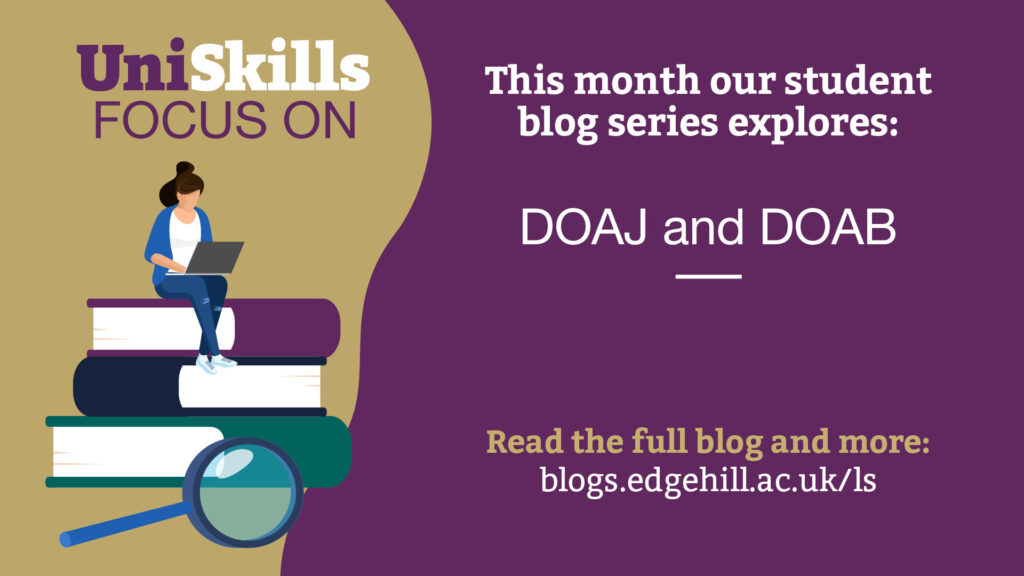Welcome to another instalment of your UniSkills Focus On… blogs. In this post we will be examining the benefits of the Directory of Open Access Books (DOAB) and the Directory of Open Access Journals (DOAJ).

What do DOAB and DOAJ offer?
Both DOAB and DOAJ contain sources that are open access. This means that they are free and open for anyone to use and do not have any subscription charges. They are covered by Creative Commons licenses, meaning that you are free to use the material you find, as long as you reference it in your work.
DOAB has over 94,000 academic peer reviewed books and DOAJ has over 21,500 academic peer reviewed journals and over 11 million articles. DOAB and DOAJ cover every possible academic subject, including but not limited to:
- Arts
- Education
- Geography
- History
- Language
- Law
- Literature
- Medicine
- Music
- Philosophy
- Politics
- Psychology
- Religion
- Science
- Social Science
- Technology
What are the benefits of using DOAB and DOAJ?
With the large range of subjects covered and the ease of access of the sources within DOAB and DOAJ, these two resources are useful for any student. They both have high quality, peer-reviewed academic sources, so you can be sure that the books and journals articles you find, and use meet the highest academic standards. Why not explore at DOAB and DOAJ and see what they can offer you?
How to access DOAB and DOAJ
There are a variety of different ways of accessing DOAB and DOAJ, including clicking on any of the links within this blog. You can also go to your Subject Resources webpage for your subject and under the Additional Resources tab, you will find links to each of these resources.
Further Help and Support
Remember, if you need any further help or support finding, accessing, or getting the most out of your resources head over to the UniSkills web pages. From here you can access lots more information, toolkits and video tutorials, book on a UniSkills Workshop and even book a one-to-one appointment.
We hope you’ve enjoyed our dive into DOAB and DOAJ. Please join us next time, when we will be exploring Times Higher Education.
